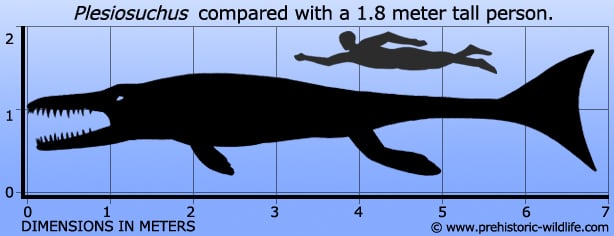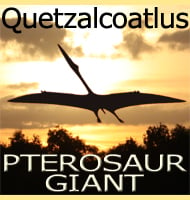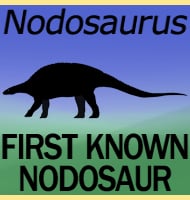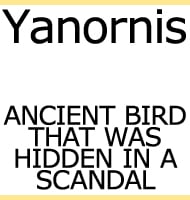In Depth
Originally thought to be a skull of a pliosaur, the Plesiosuchus holotype remains were originally credited as a species of Steneosaurus by John Hulke in 1870 . Steneosaurus is a genus of teleosaurid crocodile, a type believed to be common in coastal locations such as estuaries where they fed upon fish. Later study though identified the remains as actually belonging to a metriorhynchid crocodile, a different type of crocodile that has greater adaptations towards living most of its life in the sea. As such in 1884, Richard Owen established the genus Plesiosuchus from the remains. In the past some studies have considered Plesiosuchus to represent a species of Dakosaurus; however the most recent studies at the time of writing have concluded that Plesiosuchus is indeed a distinct genus.
Plesiosuchus has been identified as a geosaurine metiorhynchid, meaning that it is closer to genera such as Geosaurus. Geosaurines are noted as having fairly long jaws and proportionately smaller teeth than other genera such as Dakosaurus. With that said the teeth of Plesiosuchus are still large and could have been put to work on anything from large fish to even other marine reptiles. Plesiosuchus is also one of the largest metriorhynchids, and with the largest known individual measuring just under seven meters in length, Plesiosuchus is comparable to the larger pliosaurs of the time and location such as smaller species of Pliosaurus and Liopleurodon (*special note - Liopleurodon never reached lengths of twenty-five meters, more information on this is on the Liopleurodon page).
Further Reading
- The Cranial Osteology and Feeding Ecology of the Metriorhynchid Crocodylomorph Genera Dakosaurus and Plesiosuchus from the Late Jurassic of Europe. In Richard J. Butler - PLoS ONE 7 (9): e44985 - M. T. Young, S. L. Brusatte, M. B. De Andrade, J. B. Desojo, B. L. Beatty, L. Steel, M. S. Fern�ndez, M. Sakamoto, J. I. Ruiz-Ome�aca & R. R. Schoch - 2012. - Filling the ‘Corallian Gap’: re-description of a metriorhynchid crocodylomorph from the Oxfordian (Late Jurassic) of Headington, England. - Historical Biology - M. T. Young - 2013.










